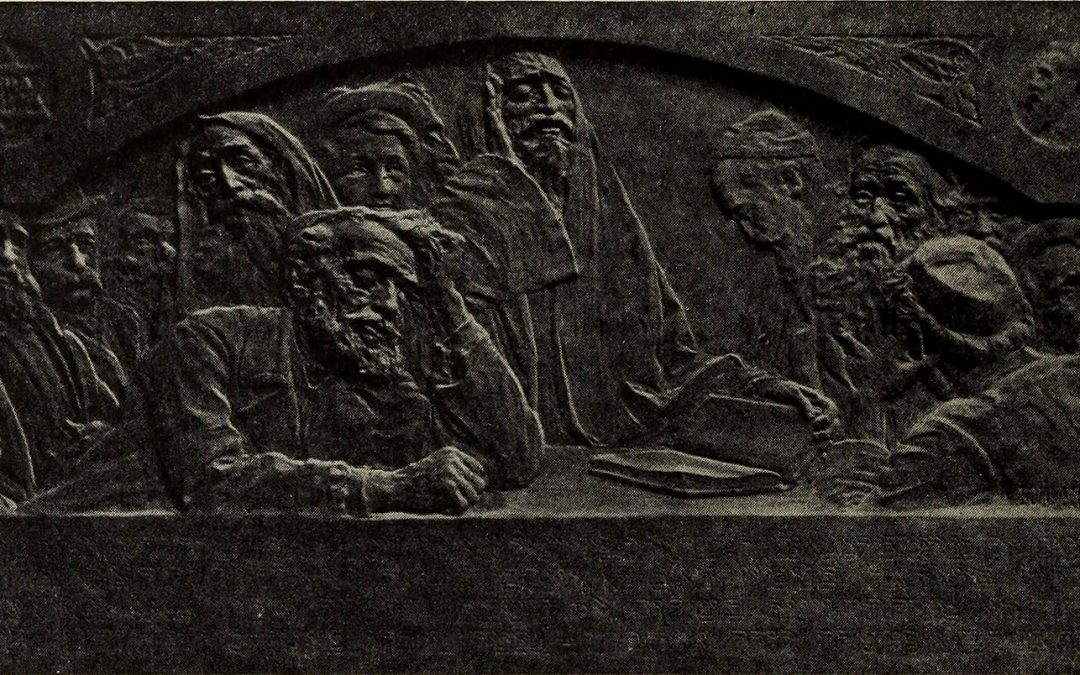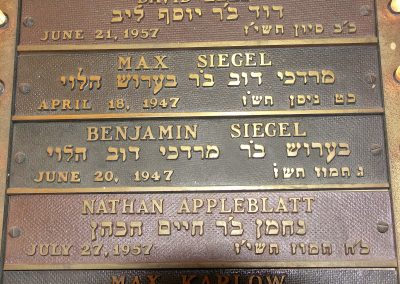Yiskor for Herzl, Bas-Relief by Prof. Boris Schatz of Bezalel. Early 20th century.
Coming into this project, I had (and admittedly still have) a very beginner-level knowledge of Jewish end-of-life practices. But hey, what better time to learn than now? If we’re being welcomed to work with the Jewish community of Victoria and in the Jewish Cemetery, it is vital that we get familiar with some of the cultural context.
I present this website/organization to you knowing that you may be equally new to these topics, but that you might also be much more well-versed, even an expert. Nevertheless, I find myself getting excited at how much information has been compiled here, and I like to believe that by sheer odds there’s something for everyone. Without further ado, I introduce you to…
Kavod v’Nichum
Kavod v’Nichum (Honor & Comfort) is a Jewish non-profit providing comprehensive education and training on Jewish end-of-life practices and rituals. Not only do they function as an educational hub, they also work with and train Chevra Kadisha groups (חֶבְרָה קַדִּישָׁא, holy society, those who care for and prepare the deceased for burial). On the site you can find information on how to start or enhance your local Chevra Kadisha, but you can also learn more generally about end-of-life practices.
The organization stresses that death is a part of the life cycle. If we’re learning about birth, coming of age, and wedding traditions, we also need to discuss and give space to those surrounding death, as it too is a part of life. Kavod v’Nichum presents Jewish end-of-life practices as deeply thoughtful, centering the honouring of the dead (kavod hamet, כְּבוֹד הַמֵּת) and the comforting of mourners (nichum avelim, ניחום אבלים). The work and care extends all the way from before the death through to the many years after it. This process is broken up into periods of time and the suggested actions to be taken during each.
There are many Jewish practices and rituals surrounding death which may or may not be observed by a specific community or person. On their website, Kavod v’Nichum runs through them in great detail, including the importance of visiting the sick, how to treat the dead, how to support mourners, and what to do when you’re a mourner yourself. Overall, they give guidance on all of these topics and many, many more, such as funerals, Taharah (טהרה) and Shmirah (שמירה) rituals, sitting shiva (שבעה), shloshim (שלושים, the 30-day period after the funeral), and the Yahrzeit (יאָרצײַט, anniversary).
There are common aspects to Jewish end-of-life practices in a general sense, but it’s also important to acknowledge that these traditions can be different, or absent, across communities and individuals, which Kavod v’Nichum highlights. While they make the point that Jewish traditions around death and mourning have “remained fairly crystallized for centuries […] around the world,” they equally recognize and honour Jewish diversity.
In the Christian-secular West, traditions may be traded out or lost touch with. While this is not necessarily negative or positive, there has been a movement in recent decades to raise awareness of Jewish practices and rituals and encourage their incorporation in communities. Kavod v’Nichum takes an active part in this, combatting the death denial we encounter. You might ask…
Why is this important?
Well, for starters, it’s important to understand that people grieve in many ways. Not just on an individual level, but also culturally. I don’t feel like our society takes this into account, and this bleeds out to us as individuals. If we’re working in the cemetery, we need to be conscious of the people who are potentially going through the mourning process while we work in this community space. Their process may be different from ours.
The part that I want to focus on though, and the part which really hit me, is this ‘death denial’. I see it all around me: death is treated as something distant, rarely coming up in conversation until we have to face it. We’re expected to get the gist while we mourn, but we’re not usually given the toolkit or support. We tend to “professionaliz[e] and compartmentaliz[e]” death, distancing ourselves from it without giving it the space it needs.
This also came up in conversation with Rabbi Harry at Congregation Emanu-El a week or so ago. He described our world as being go-go-go, not leaving time for people to process death naturally. We’re given a couple days of bereavement time at work, but by the time it’s used up, we probably haven’t even made it a few days past the death. How can this possibly be good for us? While Jewish traditions aren’t here for us non-Jews to ‘learn from’ in some weird, extractive way, I think these messages undoubtedly ring true. I challenge us to think through what about our world doesn’t work with the process of death, and what we can do to give it the mindfulness it needs.

